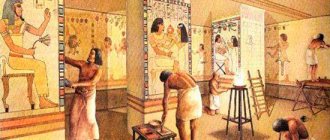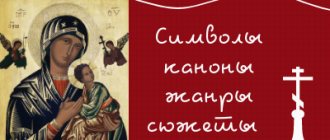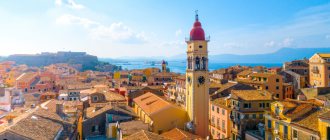Eucharistic Canon according to the “Apostolic Tradition” of St. Hippolytus.
We have already said that this ancient liturgical-canonical monument (c. 220) in genre constitutes the earliest church charter or so-called. proto-sacramentary. It consists of 43 canon chapters, briefly setting out the rules of initiation and ritual norms of the Roman Church of the early 3rd century. But in the so-called “Prologue” of St. Hippolytus says that he records not just traditions and customs, but the Tradition of the Church, which the Holy Spirit bestows on “ steadfast believers,”
guiding them into all truth. In this understanding of Tradition, as a revelation of God, he follows his great teacher Irenaeus of Lyons. The text of prayers may change over time, but the Spirit of grace and truth that permeates them is unchanged (today we will see this).
The oldest Eucharistic prayer is set out in the 4th canon and is one continuous text from “ Worthy and Righteous...”
until the final doxology.
This is the text of the bishop, which in reality, obviously, was supplemented by the prayerful exclamations of believers: “ Amen”
and “
Holy, Holy, Holy...”
By all indications, this is a Greek text, although only the Latin version has reached us (the original is lost).
Echoes of Judeo-Christianity speak about the antiquity of this prayer: the name of Christ “ The Youth,”
the mention of the “
holy people,”
etc. Textual analysis shows that certain expressions are borrowed from the “Epistle of Barnabas” and the works of the martyr. Justin the Philosopher, so the continuity of the text is undoubted.
In general, this is a prayer of a Christological nature, interpreting the Incarnation of the Son of God and His Redemptive sacrifice. This prayer is addressed to God the Father, to whom thanksgiving is offered (“ Eucharist”)
for sending down the Son of the Redeemer. Then all the main stages of the Atonement are remembered (Incarnation, Last Supper, Death on the Cross and Resurrection). And the prayer ends with a request for the sending of the Holy Spirit on the Gifts that form the Church from those who partake of them. That. the Father, the Son and the Holy Spirit are successively remembered, and the whole prayer represents the development of the doxological trinitarian formula (from which it obviously grew).
Therefore, if we analyze this prayer structurally, we will see here three clearly defined sections:
Thanksgiving (Praefatio) to God the Father.
Remembrance (Anamnesis) of the redemptive deed of the Son (containing the “institutional words” of the sacrament).
Invocation (Epiklesis) of the Holy Spirit on the Gifts and on the faithful who partake of these Gifts.
As we will see later, these three parts plus the Sanktus are contained in all subsequent Eucharistic canons. Therefore, the classic formula of the canon is: P - S - A - E.
5. Early Liturgy according to the Ethiopian List of “Apostolic Constitutions.”
The Ethiopian liturgy comes from Christian Abyssinia, which adopted the Christian faith in the 4th century. at St. Athanasius the Great. Consequently, this liturgy came from Alexandria. And it is found in the ancient canonical collection of the Alexandrian Church “ Synodos”
(“Council”) - compilations of various church rules, including the “Apostolic Decrees,” at the end of which this liturgy is placed. But when compared with the Greek text of the Apostolic Constitutions, it is clear that the Ethiopian liturgy is extremely short.
That. this is either an abbreviation or the original version. The latter is more likely, because a downward trend will appear only after St. Afanasia Vel. Bunsen dates it to the middle of the 2nd century and considers it the oldest known (“ ursprungliche” -
"original"). Indeed, the “Apostolic Constitutions” in many of their parts date back to the 3rd century and even to the middle of the 2nd century. But it was in the 2nd century that records of liturgical formulas had not yet appeared. So, this is most likely a reconstruction, and not an original form.
This monument was discovered by the Catholic scholar Job Ludolf in the large Abxein manuscript of the Vatican Library and published as an appendix to his Ethiopian History (in Ethiopian with a Latin translation). Bunsen reprinted it in Latin in his essay on St. Hippolyte of Rome. This Russian translation is taken from volume 3 of “Collected Ancient Liturgies” St. Petersburg. 1876 pp. 8-12.
Order of service:
After a bishop is installed, one and all greet him by kissing him on the mouth. And let the deacon serve him the Eucharist [i.e. substance for the sacrament]. Then he [the bishop], laying his hand on the bread of the Eucharist, together with all the elders, thanks the Lord, saying this:
Bishop: “The Lord is with you all.
People: Let everything be with your spirit.
Ep.: Heartbreak.
People: They are with the Lord our God.
Bishop: Let us thank the Lord.
People: Dignified and fair.
Ep.: We thank You, Lord, through Your beloved Son Jesus Christ, Whom You sent to us in the last days, Savior and Redeemer, messenger of Your counsel. He is the Word that exists from You, through which You created everything by Your will, and sent Him from heaven into the womb of the Virgin.
He became incarnate from the Holy Spirit and was carried in Her womb to fulfill Your will and create a people for You. He stretched out his hands and suffered in order to deliver the suffering who believe in You. By his own will, he was given over to suffering in order to destroy death, break the bonds of Satan, and trample hell, and bring out the saints, and reveal the resurrection.
So, taking the bread, he gave thanks and said: Take, eat, this is My body, broken for you.
In like manner he also took the cup, and said, “This is My blood, which is shed for you, as you do this in remembrance of Me.”
So, remembering His death and His resurrection, we bring You this bread and cup, giving thanks to You that You have honored us to stand before You and perform priestly service to You. And we earnestly pray to You to send Your Holy Spirit to offer holiness to this Church, and to give holiness to all who partake of them, so that they may be filled with the Holy Spirit, and to confirm their faith in the truth, so that they glorify and praise You in Your Son Jesus Christ, in To whom be praise and authority in the holy Church, now and always and unto the ages of ages Amen.”
(about offering oil)
Whoever brings oil during the Eucharist, like bread and wine, gives thanks in the same way. However, without using the same expressions, he, according to his own ability, can thank in other words, saying:
“Blessing this oil, grant grace to those who are anointed and receive it; just as You anointed the priests and prophets, in like manner strengthen and sanctify them and everyone who eats this.”
People: “As it was, is and will be throughout all generations and forever and ever. Amen.
Ep.: We also pray to the Almighty, the Almighty Lord, the Father of our Lord and Savior Jesus Christ, that He may grant us to receive this holy sacrament and not find any of us guilty, but make worthy all who accept and partake of the holy sacrament of the Body and Blood of Christ the Almighty , Lord our God.
Deacon: Pray... You standing, bow your heads. Eternal Lord, Knower of the unseen! Your people bowed their heads to You and they subdued the cruelty of heart and flesh to You. Look upon and bless both [i.e. men and women]. Incline Your ears to them and hear their prayers, strengthen them with the strength of Your right hand and protect them from evil passion. Be the guardian of both their body and soul. Increase in them and in us faith and fear, through Your only begotten Son, in whom You, with Him and with the Holy Spirit, have praise and power constantly and forever and ever. Amen.
Let's be careful!
Ep.: Holy to saints.
People: the Father alone is holy. One Son is holy, one is the Holy Spirit.
Ep.: The Lord is with you all.
People: And with your spirit.”
Then they sing a song of praise
[those.
obviously “Glory to God in the highest…” as in the later Greek text] and the people begin to accept the healing of their souls, which forgives sin.
(prayer of thanksgiving)
Ep.: “Lord Almighty, Father of our Savior Jesus Christ, we thank You that You have made us worthy to partake of Your holy sacrament: may it not be a guilt or condemnation for us, but a renewal of soul, body and spirit...
People: Amen.
Ep.: May the Lord be with you all.
(laying on of hands after communion)
Ep.: Eternal Lord... Bless your male and female servants. Protect and help and protect them by the power of Your angels. Preserve and strengthen them in Your fear...
People: Amen.
Ep.: The Lord is with you all.
People: And with Your spirit.
Deacon: Go in peace.
6. Liturgy according to the “Testament.”
As we have already said, “Testamentum” (“Testament”) is a Syrian monument from the end of the 3rd century. Its uniqueness is that it gives a detailed presentation of the rite of the Liturgy of the Faithful, reports the text of all its prayers and describes the entire action. Why is the Liturgy of the Catechumens not described? Because from the previous chapters it is clear that the Liturgy of the “Testament” is a continuation of the “pre-dawn meeting” (Matins), which, in fact, absorbed the Liturgy of the Catechumens. Having instructed the catechumens with readings and teachings, the bishop dismissed them with special prayer and began the Liturgy for the faithful. From the text it is clear that it consists of 5 parts.
Proposal (Proskomedia).
The deacons accepted (only from the faithful) offerings (i.e. bread and wine). At the same time, the names of those who brought and those for whom the offerings were made were written down (compare with modern notes on the Liturgy). Then they selected 3-4 loaves, mixed wine with water and placed it all on the throne. And while the bishop and the presbyters, laying their hands on the bread, said the prayer of sentence, the written names were read by the deacon or reader. (In modern Liturgy, this moment corresponds to our Great Entrance).
2. Kissing the world - i.e. mutual greeting as a sign of love and like-mindedness. In our country, this ritual has been preserved only for Easter (the so-called “Christification”), and in ordinary Liturgies it takes place in the altar and is only reminded of by the deacon’s exclamation: “ Let us love one another and confess with one mind.”
(before the Creed). Catholics and Protestants shake hands as a sign of greeting (after the Lord's Prayer).
3. The deacon’s proclamations regarding the Eucharist have no analogue in our worship. This is a purely Syriac element, later replaced by the litany.
4. The Eucharistic canon is also typically Syrian and without the Roman Sanktus
-a, which obviously had not yet reached the East in the 3rd century.
It consists of three classical parts: Preface Anamnesis - Epiklesis
and ends with the so-called.
Intercession
, i.e. intercessory prayer. This Eucharistic canon surprises us with its length. It can be seen that it developed enormously by the end of the 3rd century and was enriched with purely Eastern flowery imagery (Western canons are always more lapidary).
5. Communion and prayer of thanksgiving
Epiklesis.
The greatest interest of researchers was aroused by the epiclesis of the “Testament,” i.e. invocation of the Holy Spirit: “ We bring thanks to You, eternal Trinity, Lord Jesus Christ, Lord Father... Lord, Holy Soul: accept this drink and this food to Your Holiness, cause them to be not for condemnation of us... but for the healing and strengthening of our spirit .”
It is easy to see that there is no invocation of the Holy Spirit as such here. Instead, there is a request to accept the Holy Gifts as a sacrifice. And this request is addressed not to God the Father (as usual), but to the entire Holy Trinity!
This is the epiclesis. in which the appeal to God the Father passes (ascends) into an appeal to the entire Holy Trinity with a call to accept the Gifts, is called “ ascending epiclesis”
(term by Bishop Van der Mansbrugge).
Where could he have come from?
Appeal to the entire Holy Trinity instead of God the Father, as shown by Prof. N.D. Uspensky, is associated with the Syrian legend about Abraham and the 3 angels. Therefore it is a Syrian element. Further, it is noteworthy that when listing the Persons of the Holy Trinity, Jesus Christ, as the Redeemer, precedes God the Father here. Scholars have long noted that this is a characteristic feature of the Antiochene tradition. For the first time we find this order of remembering Persons in the Bishop of Antioch. Ignatius the God-Bearer in chapter 13. his epistles to the Magnesians: “ Be diligent therefore to be established in the teaching of the apostles... in the Son and in the Father and in the Spirit.”
On the other hand, the petition for the acceptance of the Gifts instead of the petition for the influx of the Gifts of the Holy Spirit emphasizes the sacrificial aspect of the Eucharist, and this aspect is traditionally emphasized by the Roman Church. So in the Eucharistic canon of Pope Gelasius (the earliest known) it says very figuratively: “ We earnestly ask You, Almighty God, command that this be brought by the hands of Your Angel to Your altar on high before the face of Your Divine Majesty... so that whenever we To receive from this sacrificial communion the most holy Body and Blood of Your Son, we were filled with every heavenly blessing and grace.”
There is a similar epiclesis in the ancient Mediolan Liturgy: “ And we pray and ask: accept this offering on the altar on high with the hands of Your angels...”
It is well known that in the Roman Mass for a long time there was no special prayer for invoking the Holy Spirit. In this regard, some Orthodox polemicists even accused Catholics of not having epiclesis and, therefore, not performing the sacrament. This, obviously, is the cost of polemics (and perhaps bewilderment), because, of course, there was an epiclesis - only an ascending one. After all, it is clear that God’s acceptance of the offered Gifts is inextricably linked with their transformation, which can only be accomplished by the sanctifying action of the Holy Spirit. Those. in this case, the act of transformation is conceived with the participation of all the Persons of the Trinity (the Father accepts the sacrament of the Son through the action of the Spirit) - which we see in the epiclesis of the “Testament.”
But the question arises: if here on the one hand is the Antiochian (i.e. Syrian) tradition, and on the other - the Roman one, then how could this be connected?
And here only one answer is possible: Liturgies of this type (i.e. with ascending epiclesis) are associated with the liturgical practice of the app. Peter and Barnabas. Let us remember that ap. Peter founded the Roman Church, ap. Barnabas - Antioch, but died near Rome, in Milan. And the Milanese Liturgy (with the ascending epiclesis) is attributed by tradition to Barnabas.
That. analysis of the “Testament” confirms the origin, if not of the rites of the ancient liturgies themselves, then of their Eucharistic canons - from the apostles themselves!
The practice of Communion.
If in the 2nd century, according to St. Justina, and bread and wine were distributed by deacons, then in the 3rd century bread was served personally only by the bishop at the throne. The believers came straight to the throne and received the Holy Gifts in their hands. And after that they drank from a cup offered by the presbyter or deacon (see Cyprian of Carthage: “ When, at the end of the service, the deacon began to bring the cup to those present...”
“Creations” part 2, p. 161).
St. Dionysius Bishop Alexandria writes to Pope Xystus that in his Church women are not allowed to approach the throne to receive the Holy Mysteries during the monthly purification (Eusebius “Church history” 7, 9). Consequently, on other days they (like men) received communion on the throne itself! To such an extent were the traditions of the “royal priesthood” of the people of God still alive!
3rd century worship.
The concept and meaning of the liturgy of the faithful in Orthodoxy
The word liturgy is based on two Greek words: “litos” - “public”, “ergon” - “work”, which means a work done by everyone together. The Liturgy of the Faithful includes the most important Christian rite - the sacrament of Communion, established by Jesus Christ himself at the Last Supper before his bodily death. All stages of the service symbolize the life and great feat of Jesus Christ - birth, crucifixion, death, resurrection and ascension.
Liturgy has another name - Eucharist, which means thanksgiving. During the service, believers give thanks to the Lord for mercy and help, especially for saving them through God sending his Only Begotten Son, Jesus Christ, to earth. Participation in worship means confirmation of one’s loyalty to Orthodoxy and Christ.
At the liturgy, the human soul is renewed, throwing off everyday worries and vanity. The Divine Liturgy is the basis of the Orthodox Church, the source of the spiritual development of Christians. Therefore, it is considered the most important of all Orthodox services.






